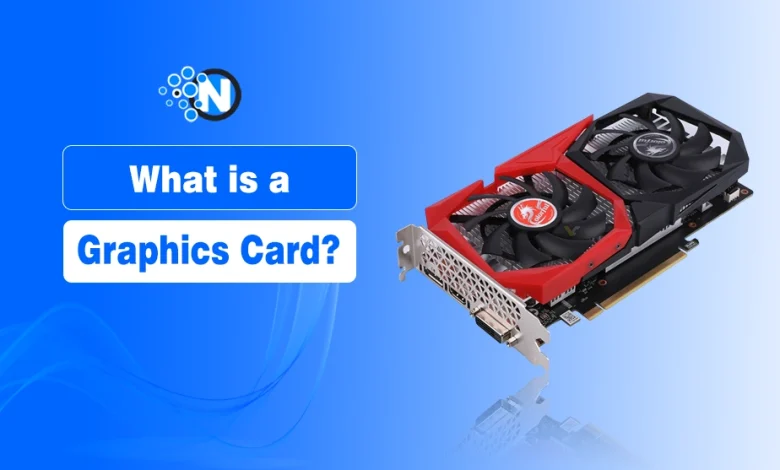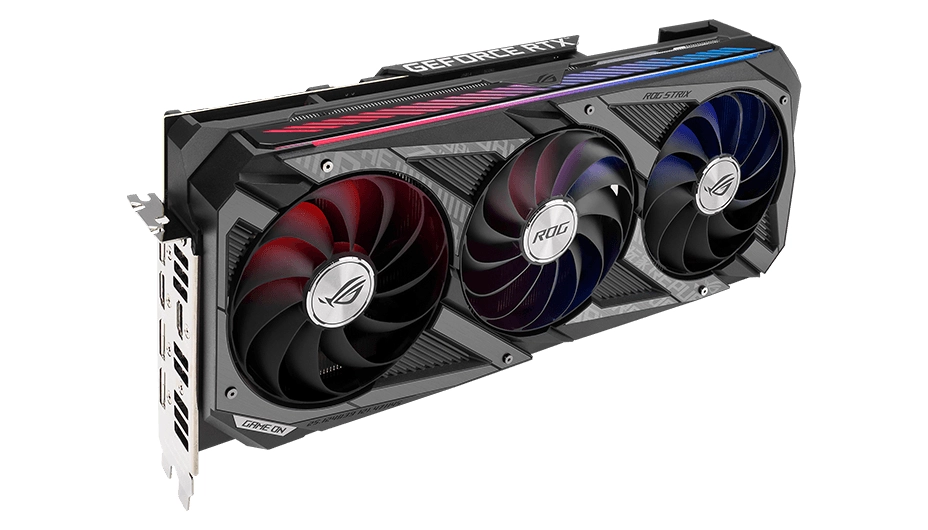What is a Graphics Card? Types, Features, and Price

If you have ever wondered what makes your favorite video game look so stunning or how your computer handles heavy visual tasks, the answer usually lies in one key component: the graphics card. So, it is essential to know what is a Graphics card. In this blog post, I’ll break down everything you need to know about graphics cards.
Whether you are building a gaming PC, editing high-res videos, or just curious about how visuals get processed, this guide is for you. Let’s get deep into what a graphics card is, explore its types, highlight key features, and look at how much they actually cost.
What is a Graphics Card in a Computer?
A graphics card, also known as a GPU (Graphics Processing Unit), is a piece of hardware responsible for rendering images, animations, and videos.
Think of it as the artist in your computer that takes digital information and transforms it into visuals you can see on your screen. Whether you are streaming, watching a movie, designing graphics, or playing games, your GPU ensures everything runs smoothly and looks amazing.
While most basic computing tasks can be handled by the CPU, more demanding visual tasks require a powerful GPU. Without a capable graphics card, your computer might lag, freeze, or produce choppy visuals.

Why Do You Need a Graphics Card?
Before we jump into the types and features, let me explain why you would even want a good graphics card and what is a graphics card used for in the first place.
- Enhanced Gaming Experience: If you are into gaming, a graphics card is not optional. It is what allows you to play modern games with high-resolution textures, realistic lighting, and smooth frame rates.
- Better Video and Photo Editing: A dedicated GPU can significantly speed up rendering times, allow real-time previews, and handle higher-resolution footage without lag.
- Support for High-Resolution Displays: If you use 240 Hz monitors or multi-screen setups, a robust graphics card is necessary to handle the load.
- Smooth Overall Performance: Even general tasks like browsing the web, using office applications, or streaming content become smoother with a good GPU.
Types of Graphics Cards
There are several kinds of graphics cards available in the market, and each serves different needs. Let me walk you through the major types so you can decide what fits your use case best.
1. Integrated Graphics Cards
These are built into the CPU or motherboard and share memory with the rest of the system. They are great for basic tasks like web browsing, streaming, and office work. If you are not doing anything graphically intense, integrated graphics will serve you just fine.
<strong>Subject</strong>: ………………………………
📌 Fact: Some Dell laptops have two GPUs. While the primary one is an Integrated Graphics Card, the other one is specified for NVIDIA or AMD GPUs.
2. Dedicated Graphics Cards
Dedicated GPUs come as separate hardware units and have their own memory (VRAM). These are built for enhanced performance and are ideal for gaming, video editing, and other demanding tasks.
Now remember, if anyone ever asks you what is a graphics card for gaming, tell them that they should go with a dedicated graphics card.
3. Workstation Graphics Cards
These are designed for professional environments like 3D modeling, CAD design, and scientific simulations. Brands like NVIDIA Quadro and AMD Radeon Pro are popular in this segment. They are more stable and optimized for productivity software rather than games.
4. External Graphics Cards (eGPUs)
An external GPU is an enclosure that holds a desktop-grade graphics card and connects to a laptop via Thunderbolt 3 or USB C. This is perfect if you have a thin laptop but need GPU power occasionally for gaming or editing.
Features to Consider When Buying a Graphics Card
When shopping for a GPU, the list of specs can get overwhelming. Therefore, I have mentioned some important points that you should focus on to simplify the selection procedure. Here is what really matters and why.
1. Video RAM (VRAM)
VRAM is the memory your GPU uses to store textures, frame buffers, and more. More VRAM allows your card to handle higher resolutions and complex graphics. For gaming PCs, 6GB is the minimum I would recommend today.
2. Clock Speed
This measures how fast the GPU processes data. While not the only factor, higher clock speeds generally translate to better performance.
3. Cooling System
Graphics cards generate heat, especially during gaming or rendering. That’s why it would be best if you look for models with good fans or liquid cooling options to maintain optimal performance.
4. TDP (Thermal Design Power)
This tells you how much power the card uses. So, you have to make sure your power supply unit (PSU) can handle it, and your case has enough airflow.
5. Ports and Connectivity
The next thing you should take care of when purchasing a graphics card is ports and connectivity. A perfect pick should have the right output ports for your monitor setup, including the likes of HDMI, DisplayPort, or even DVI. Some also support multiple monitor setups.
6. Ray Tracing Support
Modern games use ray tracing for realistic lighting and shadows. Cards like the NVIDIA RTX series support this feature, Hence, they give you stunning visuals.
7. DLSS and AI Features
DLSS (Deep Learning Super Sampling) is an AI-powered tech from NVIDIA that boosts frame rates without sacrificing image quality. It is a game-changer, literally.
8. Compatibility and Size
Lastly, you should check if the card fits in your PC case and is compatible with your motherboard and PSU. Some high-end cards are quite bulky.
Top Brands for Graphics Cards
I know choosing the right brand is a bit challenging, but it can also impact your experience. Here are some of the most trusted names in the GPU world.
- NVIDIA: Known for innovation and performance, NVIDIA’s GeForce RTX 5070 Ti and GTX series dominate the gaming market. Their driver support and features like DLSS and ray tracing are industry-leading.
- AMD: AMD’s Radeon series offers excellent value for money. With features like Smart Access Memory and competitive pricing, AMD is a strong alternative to NVIDIA.
- Intel: Intel has entered the discrete GPU market with its Arc series. They are still new, but they offer solid performance for mid-range users.
- ASUS, MSI, Gigabyte: These are third-party manufacturers that take chips from NVIDIA or AMD and build custom cooling systems, improved power delivery, and factory overclocks.
Price Ranges of Graphics Cards
Graphics cards can range from affordable to eye-wateringly expensive. I have enlisted here a quick breakdown to help you budget.
- Budget (Under $200): These are great for casual gamers and general use. Cards like AMD RX 6400 or NVIDIA GTX 1650 fall into this category.
- Mid-Range ($200–$500): Ideal for 1080p and some 1440p gaming. Look into cards like RTX 3060 or Radeon RX 6700 XT.
- High-End ($500–$1000): Perfect for high-resolution gaming and heavy-duty creative work. The RTX 4070 Ti and RX 7900 XT are examples.
- Enthusiast (Over $1000): These cards are for those who want the absolute best. Think RTX 4090 or Radeon RX 7900 XTX. Excellent performance, but expensive.
Final Thoughts
So there you have it – a complete, down-to-earth explanation of what is a graphics card. Whether you are gaming, editing videos, or just curious about your tech, understanding your GPU can make a world of difference.
I hope this guide helped you figure out which type of graphics card suits your needs and how much you should spend. Don’t worry if it still feels a bit technical; just come back to this guide whenever you are shopping for a new card or upgrading your rig.
Your computer’s visuals will thank you.




